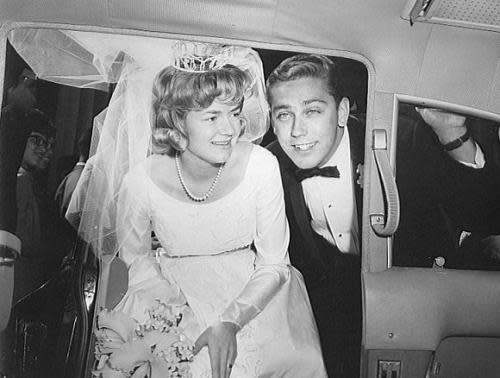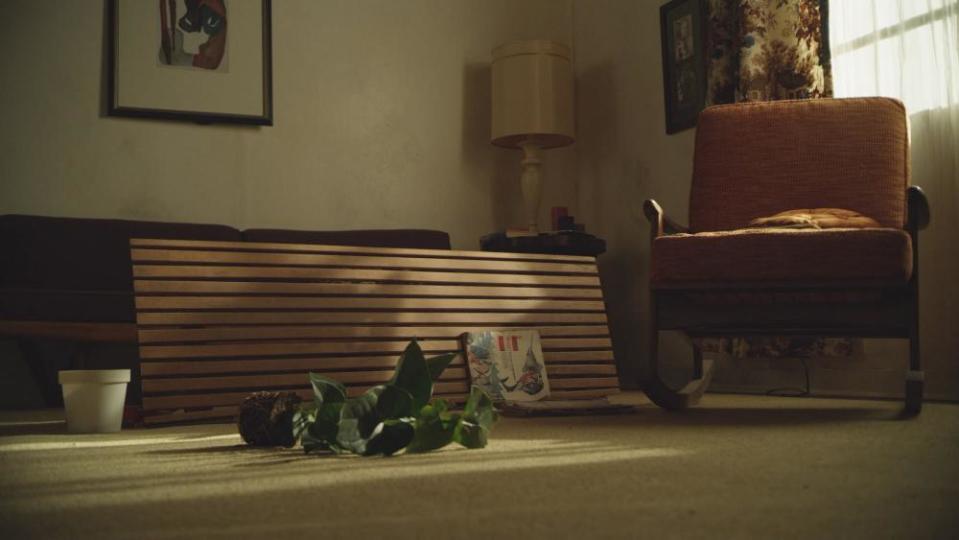A Wilderness of Error: the year's most troubling true crime series

A Wilderness of Error, a five-part true crime series that’s more meditation on the magnetism of conclusions than the pursuit of one, begins, tellingly, with the acknowledgment of directorial obsession.
Related: 'The moment the dream died': inside a Netflix series on the Challenger disaster
In front of the camera: Errol Morris, the influential film-maker whose 1988 documentary The Thin Blue Line cemented now-staples of the true crime visual genre (most notably, the use of eerie, titillating re-enactments). Behind the lens, whose artifice – lighting, stark set, the screen facing Morris – is revealed bit by bit over five episodes, is Marc Smerling, the producer and co-writer of HBO’s The Jinx, the hit documentary series whose on-screen, seemingly real-time revelations dropped jaws and cemented the series as an emblem of the mid-2010s narrative true crime boom. Both directors are familiar with the real-world impact of storytelling as investigation: Morris’s plumbing of doubt in The Thin Blue Line secured the release of a man convicted of killing a police officer, while The Jinx’s investigation of the real estate heir Robert Durst for three separate murders precipitated his arrest the day before its shocking finale. These are practiced hands, and A Wilderness of Error, named for Morris’s 2012 book of the same name about a brutal and notoriously uncrackable 1970 triple murder, thus leaps not from an investigation of events as intent: “so what brings you here today?” Morris asks Smerling, who answers, to start, “the story within the story.”
A Wilderness of Error leans into this narrative complicity, the acknowledgement from the jump that “this story has been litigated in courts and litigated in the public eyes, and people have already taken sides,” Smerling told the Guardian. The case is “the poster child” for “how storytelling can effect reality”, a grisly crime whose subsequent renderings, depictions, retellings and investigations have rippled for decades into choppy, well-trod waters, the individual narrative currents indistinguishable from each other.
At its heart is, of course, the crime itself: on the night of 17 February 1970, military police responding to a 911 call in Fort Bragg, North Carolina, discovered the bodies of Colette MacDonald, pregnant with her third child, and her two daughters, five-year-old Kimberley and Kristen, aged two. All three had been stabbed in excess of 30 times and bludgeoned; the word “pig” was scrawled in blood on the bedroom wall, an echo of the infamous Manson murders in Los Angeles the summer before. Colette’s husband and the girls’ father Jeffrey MacDonald, an army captain and physician found unconscious next to his wife’s body, claimed the house had been invaded by four “hippies” – three men and a mysterious woman in a floppy hat, holding a candle – hell-bent on drugs and helter-skelter chaos. A military investigation, deemed botched in the subsequent media frenzy and later investigations into the case, cleared MacDonald of any wrongdoing (in an indication of national fascination with the murders, MacDonald then appeared, in a clip now deeply unsettling to watch, on the Dick Cavett Show to recount the trial to ambient audience laughs).
But the tide turned on MacDonald – his in-laws, at one time staunch supporters during the military trial, became convinced of his guilt and spearheaded a press crusade for a new trial; he was convicted of the murders of his wife and children in 1979 and given three life sentences. The case closed, but the story – its fascinations, its implication of obsession – continued to ripple throughout the national consciousness. A controversial bestselling book, Fatal Vision, by the journalist Joe McGinnis, who embedded with the defense team in the 1979 trial and befriended MacDonald, portrayed the former army doctor as a narcissistic sociopath and was adapted into a critically acclaimed mini-series that aired before millions in 1984. Janet Malcolm’s book The Journalist and the Murderer, a 1990 recrimination of McGinnis’s ethical failures in building MacDonald’s trust, became a seminal meditation on journalists’ culpability in shaping narrative and breaking trust. Morris took on the case shortly after, relying on inconsistencies and the persistence of a potential corroborating witness – Helena Stoeckley, a 17-year-old drug addict in 1970 who claimed to be the woman in the floppy hat on and off for 15 years – to cast doubt on MacDonald’s guilt. (Stoeckley died from pneumonia and cirrhosis in 1983 at age 32).

Enter Smerling, who picks up the story from Morris’s 20-plus year obsession, after himself achieving notoriety in the documentary pursuit of crime. Revisiting what some have called the “granddaddy of murder mysteries,” Smerling said, “I was thinking about The Jinx, I was thinking about our effect on reality with that. I was wondering, maybe there’s a way to do something that illustrates where reality and storytelling intersect.” A Wilderness of Error bifurcates along these lines: a retreading of the facts, in the crime scene and its media afterlife, as relayed in the re-enactments and evocative scene-setting pioneered by Morris, and a meta conversation between film-makers that expands (literally, as the camera pans out on Morris’s interrogation set-up) into the motivation of true crime storytelling itself. “What happens when a narrative takes the place of reality?” Morris says, in a refrain that anchors the title credits. “It’s almost as if nothing really happened in history unless it has been recorded in a movie or in a television series.”
Smerling does contribute new angles to the story, in revisiting documents from the crime scene investigation and a recovered trove of phone calls recorded by Colette’s dogged father, Freddy Kassab (skeptical of the military’s investigation, he obsessively recorded calls with MacDonald and others, which reveal in time-portal detail his change of heart on his son-in-law). Most notably, Smerling speaks with Stoeckley’s two surviving brothers and a former roommate, who all provide context into who a character used as shorthand – for MacDonald’s proclaimed innocence, for the fear of violence in Manson’s wake, as an image indicative of lurking suspense in the FX series – was as a person. Not included is MacDonald himself or his wife as of 2002, Kathryn, both of whom declined to participate after scheduling an interview with Smerling at the federal prison in Cumberland, Maryland, where he is serving his sentences. (In 2012, an appeals court upheld MacDonald’s conviction after years of attempts to secure a re-trial on “new evidence”). “I never really got a clear idea of why other than I got the sense that they had this feeling that storytellers of the past hadn’t worked out,” said Smerling.
The heft of the series is not in its retracing of the murder – the compiling of evidence is ultimately not that ambiguous – but in the narrative frustration of loose ends, of uncomfortable motivations to play protagonist in someone else’s story. “Some people are going to be frustrated by that,” Smerling said of the ourobouros between the directors. “We wrapped it all up with Robert Durst, but this one I’m afraid you’re going to have to make a decision on your own.”

Smerling confirmed that he did arrive at an opinion on what happened that night in February 1970, but declined to specify – “watch the series and figure out for yourself”, he said. “People are going to have their own takes on this.”
There’s an opinion on what happened – the actual tragedy of three murdered people – and the separate but perhaps more influential opinion on the guided roads to opinion, a distinction Smerling knows well, given the runaway word-of-mouth success of The Jinx. By the end of the buzzy series, in which Durst appeared to confess on a hot mic while in the bathroom – “killed them all, of course”, he said, in what could be self-muttering or imagining someone else’s perception of him – it was “unsettlingly unclear exactly whose taste for blood was being chronicled in The Jinx, and whose appetite was being satisfied”, wrote Rebecca Mead in the New Yorker, as conversation over the story spilled over online. The popularity of the show “made me a little uncomfortable”, Smerling said. “I don’t have any great love for Robert Durst, but I felt like we’ve done something that I didn’t understand while we were doing it what the real-world impact was going to be. You’ve lost control, in some ways.”
The Jinx, along with mega-hit murder investigations Serial, a 2014 podcast, and Netflix’s Making a Murderer, epitomized the true crime boom of the mid-2010s, in which detailed, occasionally self-aware and interrogating narrative accounts of horrific violence boomed on streaming charts. The true crime wave spurred its own cascading after-narratives – the ongoing legal sagas of Serial’s Adnan Syed, for example, and Making a Murderer’s Steven Avery – but also critical pushback to the genre’s reliance on shock, and someone else’s pain, for a vice-like grip on attention. “Like anything that becomes popular, it’s going to be exploited,” said Smerling of the genre. “You’re going to find people rushing stuff to market, trying to do stuff in half the time it takes someone like me to do it. They’re not going to have done a deep dive on these subjects. They’re not going to have done the work necessary to look at the record completely. So you’re going to get into a position where you’re going to get lower quality work.”
The result is “a lot of salacious and unsatisfying crime stories. Or satisfying, but not satisfying for the right reasons,” he said, which puts the onus on viewers to “be able to make choices on their own based on whether the job is done well, whether they understand everything about the crime. That’s a big part of what inspired this series.”
At this point, legally speaking, the case is written in stone, he said. “All this has been adjudicated. A lot of judges have looked at this, a lot of people have looked at this, and they’ve come down to their own opinions of what happened.”
“Obviously Jeffrey is still in prison,” he said. “But if I could do anything to get people talking about it again, thinking about it again, thinking about storytelling, being better consumers of storytelling, that’s a reason to do this.”
A Wilderness of Error starts on FX on 25 September and on Hulu on 26 September with a UK date to be announced

 Yahoo News
Yahoo News 